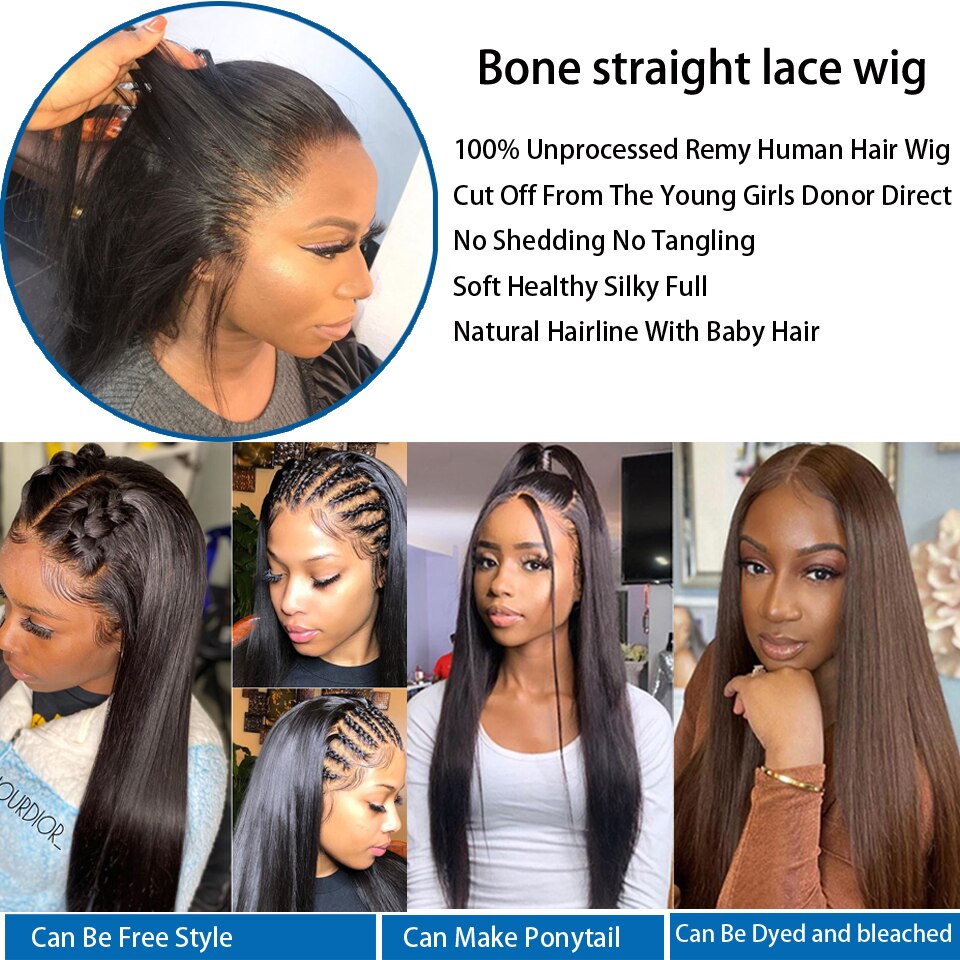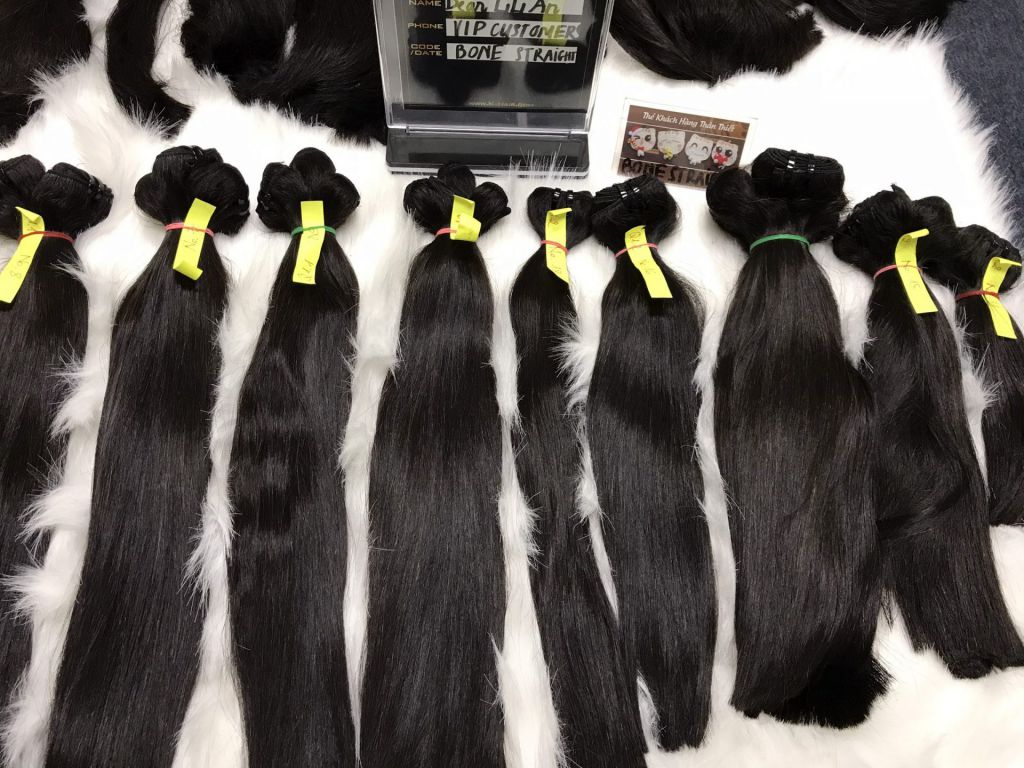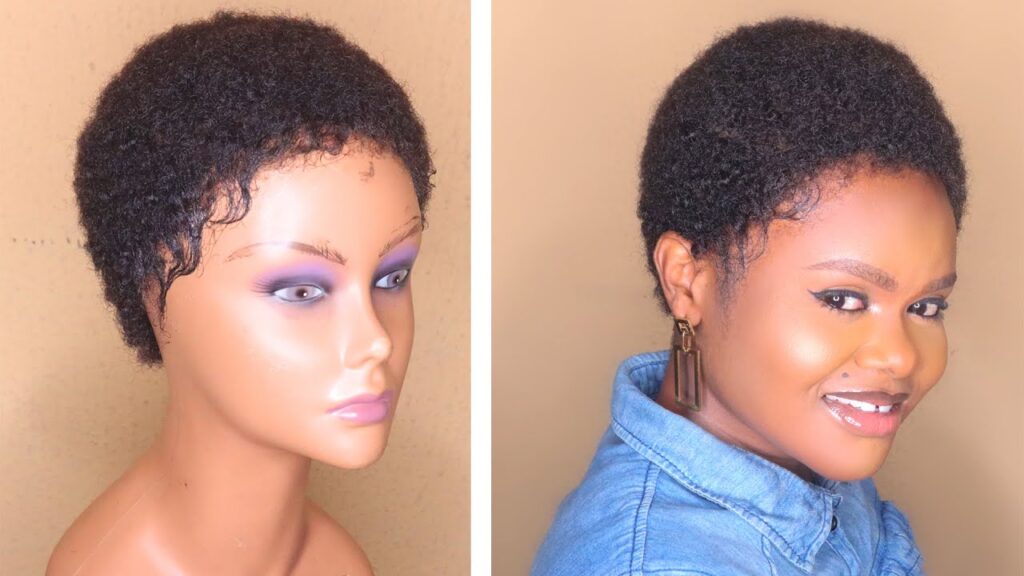Do you ever find that your human hair wig feels a bit bulky or heavy? Well, you’re not alone. Many people struggle with reducing the bulk in their wigs to achieve a more natural and comfortable look. In this article, we’ll dive into some helpful tips and techniques that can help you reduce bulk in your human hair wig. So, if you’re curious and want to learn more, keep reading!
One of the simplest ways to reduce bulk in your wig is by thinning it out. Thinning shears or a razor comb can be used to carefully thin the hair, removing some of the extra bulk and creating a more natural appearance. It’s important to be gentle and take your time when thinning the wig to avoid any uneven or choppy results.
Another option is to consider layering your wig. By adding layers, you can create movement and dimension, which can help to reduce bulk and create a more lightweight and airy look. Layering can be done by a professional stylist or, if you’re feeling confident, you can try doing it yourself with the help of some YouTube tutorials.
If thinning or layering doesn’t seem like the right option for you, another technique to reduce bulk is to use heat styling tools. Applying heat can help you reshape and manipulate the hair, allowing you to create a desired volume and reduce excessive bulk. Just be sure to use a heat protectant spray before applying any heat to your wig to protect the hair from damage.
In addition to these techniques, it’s important to properly care for your wig to minimize any potential bulkiness. Regularly washing and conditioning the hair will help to keep it soft, manageable, and free from any product build-up that could contribute to bulk. Additionally, storing the wig properly when not in use can help to maintain its shape and prevent any unnecessary matting or tangling.
In conclusion, reducing bulk in a human hair wig is entirely possible with the right techniques and care. Whether you choose to thin the hair, add layers, use heat styling tools, or a combination of these methods, you can achieve a more natural and comfortable look. Remember, it’s all about finding the approach that works best for you and your specific wig. So don’t be afraid to experiment and have fun with your styling!

Definition of Bulk in Human Hair Wigs
Before diving into the methods to reduce bulk in a human hair wig, it is important to understand what bulk means in this context. Bulk refers to the excessive thickness or heaviness of the wig, making it appear unnatural or bulky. This can occur due to various factors, including the density of the hair strands, the amount of hair used, and the construction of the wig cap.
Causes of Bulk in Human Hair Wigs
There are several factors that can contribute to the bulkiness of a human hair wig. These include:
-
Excessive Hair Density: Human hair wigs are often designed to mimic the natural density of hair, but sometimes the density can be too high, resulting in unnecessary bulk. This can be due to the use of too many hair strands during the construction process.
-
Improper Wig Construction: The way in which the wig is constructed can also affect its bulkiness. If the hair is sewn in too densely or the wig cap is designed to accommodate too much hair, it can lead to increased bulk.
-
Hair Texture and Length: The texture and length of the hair used in the wig can also contribute to its bulkiness. Curly or coily hair textures tend to take up more space, making the wig appear thicker. Similarly, longer hair lengths can add to the overall bulk of the wig.
-
Lack of Thinning or Layering: If the wig has not been properly thinned out or layered, it can contribute to its bulkiness. Thinning out the hair allows it to lay flatter and reduces the overall volume, resulting in a more natural and lightweight appearance.
Now that you have a better understanding of what causes bulk in human hair wigs, let’s explore some methods to effectively reduce bulk and achieve a more natural look.

Methods to Reduce Bulk in a Human Hair Wig
Trimming the Wig
One of the simplest and quickest ways to reduce bulk in a human hair wig is by trimming it. Trimming involves cutting off excess hair to create a more balanced and natural look. Here’s how you can trim your wig effectively:
Assessing the bulkiness of the wig
Before you begin trimming, assess the areas of the wig that appear bulky. This will help you determine which parts need to be trimmed.
Identifying the areas to be trimmed
Using a comb, separate the hair into sections and identify the areas that need trimming. Pay attention to areas such as the crown, sides, and back, as these are usually the parts that tend to have more bulk.
Using sharp scissors for precision
It is important to use sharp, professional-grade scissors for trimming the wig. Dull scissors can cause uneven cuts and result in a choppy appearance.
Taking small sections at a time
To ensure precision and control, work with small sections of hair at a time. This allows you to have more control over the amount of hair being cut and helps achieve a more balanced and even look.
Trimming the excess hair carefully
Start by making small, gentle cuts to remove the excess hair. Take your time and regularly assess the wig’s appearance to avoid cutting too much hair at once. Remember, it’s always better to trim gradually than to cut off too much and risk ruining the wig.
Thinning out the Hair
Thinning out the hair of a human hair wig can significantly reduce bulk, making it appear more natural and lightweight. Thinning shears are specialized scissors with teeth-like edges that remove hair without creating harsh lines. Here’s how you can thin out your wig:
Sectioning the wig
Start by sectioning the wig into smaller, manageable parts. Use hair clips or ties to keep the sections separated.
Using thinning shears
Thinning shears are designed to remove hair without creating blunt lines. Hold the shears at a slight angle and carefully run them through the hair to remove excess strands.
Removing excess hair in desired areas
Focus on the areas of the wig that appear bulky and remove excess hair using the thinning shears. This process should be done gradually, taking small sections of hair at a time.
Blending the sections for a seamless look
After thinning out the desired areas, comb through the hair to blend the thinned sections with the rest of the wig. This helps achieve a seamless and natural-looking result.
Applying Heat Styling Techniques
Heat styling techniques can also help reduce bulk in a human hair wig and create a more polished look. However, it is important to be cautious when using heat on a wig to avoid damaging the hair strands. Here are some heat styling techniques you can use to reduce bulk:
Using a flat iron to flatten bulky sections
If there are specific sections of the wig that appear bulky, you can use a flat iron to straighten and flatten them. Start by applying heat protectant spray to the hair and then use the flat iron to gently straighten the sections, creating a sleeker and more streamlined appearance.
Curling the hair to create volume in specific areas
On the other hand, if you want to add volume to specific areas of the wig, you can use a curling iron or hot rollers. By curling certain sections, you can create the illusion of more volume and reduce the appearance of bulk in other areas.
Using a blow dryer and a brush to smooth out the wig
A blow dryer and a brush can be used together to smooth out the hair and reduce bulk. After applying heat protectant spray, use a round brush and a blow dryer to gently brush through the hair while applying heat. This helps to relax the hair strands and create a smoother, less bulky look.
Applying heat protectant before using heat styling tools
Before using any heat styling tools on your wig, always apply a heat protectant spray or serum. This helps to minimize damage to the hair strands and ensures that the wig remains in good condition.
Using Product to Reduce Bulk
There are various products available that can help reduce bulk in a human hair wig and create a more natural-looking appearance. These products work by softening the hair, eliminating frizz, and providing hold and control. Here are some product options to consider:
Using a wig-specific conditioner to soften the hair
Wig-specific conditioners are designed to nourish and soften the hair, making it more manageable and less bulky. Apply a small amount of conditioner to the wig, focusing on the areas that appear bulky, and leave it in for the recommended amount of time before rinsing thoroughly.
Applying a lightweight wig serum to eliminate frizz
Frizz can contribute to the appearance of bulk in a wig. To combat frizz and create a sleeker look, apply a lightweight wig serum to the hair. Focus on the mid-lengths and ends, as these are the areas that are more prone to frizz.
Adding a small amount of wig-safe gel for sleekness
Wig-safe gels can help create a sleeker appearance and reduce bulk in the hair. Apply a small amount of gel to your fingertips and gently smooth it over the hair, focusing on the areas that require additional control and hold.
Using a wig hairspray for hold and control
Wig-specific hairsprays are designed to provide hold and control while maintaining the natural look of the wig. Choose a lightweight wig hairspray and apply it sparingly to the hair, focusing on the areas that need additional hold and to reduce any flyaways.
Preventing Future Bulk in a Human Hair Wig
Reducing bulk in a human hair wig is just the first step. To ensure that the wig remains lightweight and natural-looking, it is important to take preventive measures. Here are some tips to help you prevent future bulk in your human hair wig:
Proper wig storage to maintain shape
When not in use, store your wig on a wig stand or mannequin head to help maintain its shape. Avoid folding or squishing the wig, as this can lead to matting and tangling, resulting in unnecessary bulkiness.
Regular cleaning and maintenance
Regularly clean your wig to remove any product buildup and keep the hair strands in optimal condition. Follow the manufacturer’s instructions for cleaning and conditioning your wig, and use wig-specific products for the best results.
Avoiding excessive heat styling
While heat styling can be a helpful tool for reducing bulk in a wig, excessive heat can also damage the hair strands and lead to further bulkiness. Use heat styling tools sparingly and always apply a heat protectant before styling.
Limiting the use of heavy products
Avoid using heavy or greasy products on your wig, as these can weigh down the hair strands and contribute to bulkiness. Opt for lightweight products that are specifically formulated for use on wigs.
Protecting the wig during outdoor activities
If you plan on being active outdoors, such as during sports or swimming, protect your wig from excessive sweat, chlorine, and UV rays. Wear a wig cap or a headband to help absorb sweat and minimize the accumulation of oils and dirt, which can contribute to bulkiness.

Common Mistakes to Avoid When Reducing Bulk
While it is important to understand the methods to reduce bulk in a human hair wig, it is equally important to avoid common mistakes that can compromise the appearance and quality of the wig. Here are some common mistakes to avoid:
Cutting too much hair at once
When trimming your wig, it is crucial to be patient and trim gradually. Cutting too much hair at once can result in an uneven and choppy appearance. Take your time and regularly assess the wig’s appearance as you trim.
Using regular scissors instead of sharp shears
Sharp shears or scissors specifically designed for cutting hair should always be used when trimming or thinning out a wig. Regular scissors can cause uneven cuts and contribute to a choppy appearance.
Applying too much heat without heat protectant
Heat can be damaging to human hair wigs if used excessively or without proper protection. Always apply a heat protectant spray or serum before using heat styling tools to minimize damage to the hair strands.
Using excessive product that weighs down the wig
While product can help reduce bulk in a wig, it is important to use it sparingly. Using excessive product, such as conditioner or gel, can weigh down the wig and make it appear even bulkier.
Neglecting proper storage and maintenance
Proper storage and maintenance are essential to keep your wig looking its best. Neglecting these practices can result in tangling, matting, and unnecessary bulkiness. Follow the manufacturer’s instructions for storage and maintenance to ensure the longevity and quality of your wig.
Tips and Tricks
Here are some additional tips and tricks to keep in mind when reducing bulk in a human hair wig:
Consulting a professional stylist for guidance
If you are unsure about trimming or thinning out your wig, consider consulting a professional stylist. They can provide guidance and ensure that the process is done correctly.
Gradually trimming and thinning the hair
When trimming or thinning out your wig, it is best to do it gradually. Take your time and assess the wig’s appearance as you go along to achieve the desired result.
Experimenting with different heat styling techniques
Heat styling can help reduce bulk in a wig, but different techniques may yield different results. Play around with different heat styling tools and methods to find what works best for your wig.
Using small amounts of product and building up if necessary
When applying product to your wig, start with small amounts and build up if necessary. This prevents applying too much product at once, which can weigh down the wig and contribute to bulkiness.

Benefits of Reducing Bulk in a Human Hair Wig
Reducing bulk in a human hair wig offers several benefits, including:
Improved comfort and fit
A wig with reduced bulk feels lighter and more comfortable to wear. It sits more securely on the head and allows for better airflow, enhancing overall comfort.
Enhanced natural appearance
By reducing bulk, a human hair wig can appear more natural and realistic. It closely mimics the look and feel of natural hair, contributing to a seamless and convincing hairstyle.
Ease of styling and maintenance
Wigs with reduced bulk are easier to style and maintain. The hair lays flatter and is more manageable, making it simpler to achieve desired hairstyles and handle daily maintenance routines.
Considerations for Different Wig Types
Different types of human hair wigs may require specific approaches when it comes to reducing bulk. Here are some considerations for different wig types:
Remy human hair wigs
Remy human hair wigs are considered the highest quality because the hair strands are aligned in the same direction, resulting in a more natural appearance. When reducing bulk in a Remy wig, extra care needs to be taken to maintain the alignment of the hair strands.
Lace front wigs
Lace front wigs have a lace material along the hairline, allowing for a more natural-looking hairline and the option to style the hair away from the face. When reducing bulk in a lace front wig, pay extra attention to the hairline and the surrounding areas for a seamless blend.
Full lace wigs
Full lace wigs have a lace cap that covers the entire head, allowing for more versatility in styling. When reducing bulk in a full lace wig, focus on thinning out the hair throughout the entire cap to achieve a lightweight and natural look.
Different hair textures and origins
Different hair textures and origins have unique characteristics that may require specific techniques. For example, curly or coily hair textures may require more thinning out to reduce bulk, while straight or wavy textures may benefit from precision trimming.

Conclusion
Reducing bulk in a human hair wig is achievable through various techniques such as trimming, thinning out the hair, using heat styling techniques, and using product strategically. By following these methods and avoiding common mistakes, you can achieve a more natural-looking and lightweight wig.
Regular maintenance and proper styling techniques are essential to maintain the desired look and extend the lifespan of your wig. Understanding the characteristics of your wig and its specific type, such as Remy, lace front, or full lace, can further enhance the effectiveness of bulk reduction techniques.
Remember, practice and patience are key when it comes to reducing bulk in a human hair wig. With time and experimentation, you will find the techniques that work best with your wig and personal style. So go ahead, embrace the versatility of your human hair wig, and create the perfect look that showcases your unique personality and style.
